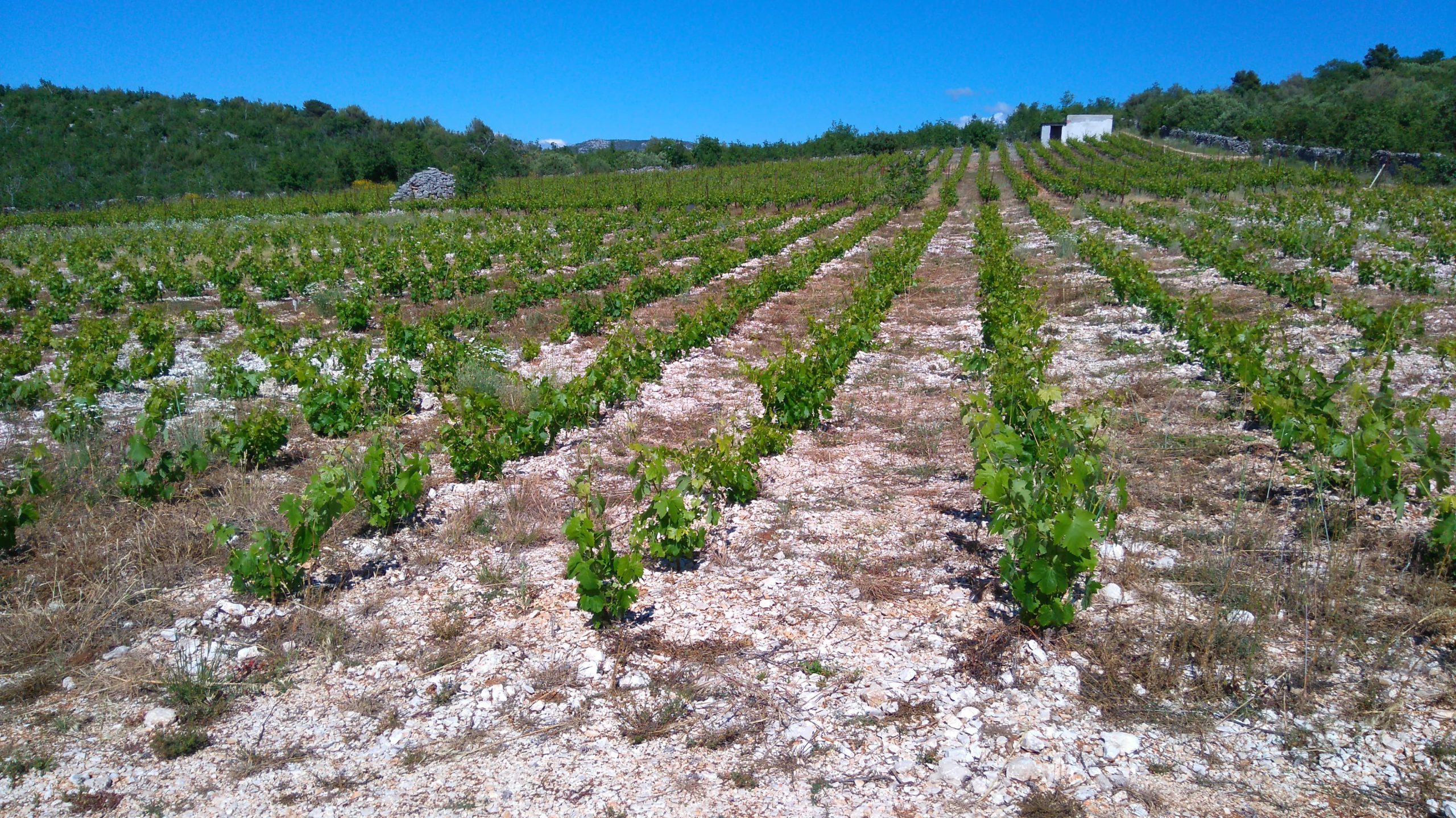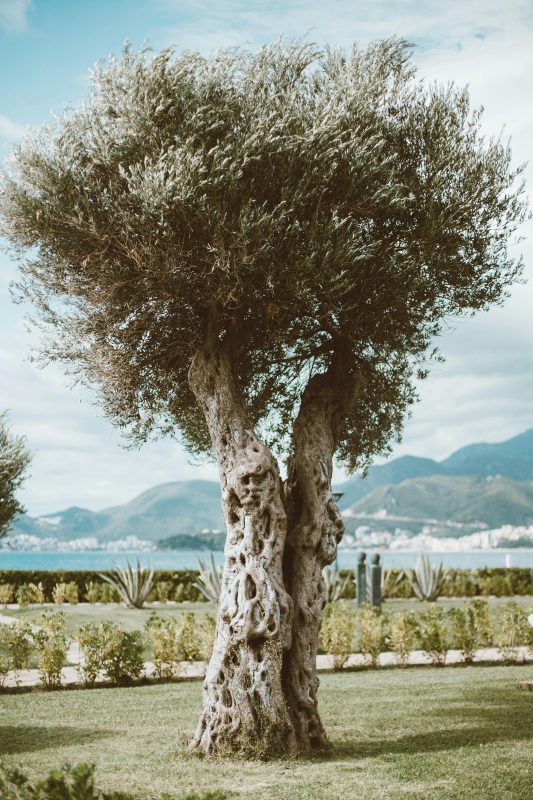In the heart of Šibenik-Knin County, on the steep terraces of Primošten, the Babić grape has withstood wind, salt, and time for centuries.
Here, where wine is a way of life, and the ground is more stone than soil, Babić yields wines of remarkable quality – with a character you simply can’t replicate.
The most renowned vineyard site, Bucavac, looks as if it were sculpted by hand – a web of dry-stone walls cascading like stone lace down to the turquoise Adriatic Sea.
These vineyards are more than agricultural land – they are living monuments to human effort, shaped over generations by tireless hands that carved identity into every inch of landscape.
A Brief Look at Babić
The people of Primošten have always known what the wine world is only now beginning to discover – that Babić is more than just a grape. It is woven into the stone, salt, and sweat of this region, planted from the very beginning of viticulture in this part of Dalmatia. Often as the only variety – because they simply needed nothing else.
Babić grows on the harsh, barren limestone soils of Dalmatia’s karst landscape – terrain that is unforgiving to most, but gives Babić exactly what it needs to become authentic, bold, and full of character. When paired with the skillful hands of a winemaker, Babić can produce one of Dalmatia’s most balanced and distinctive red wines – rich in extract, vibrant in acidity, firm in tannins, seductively aromatic, and long-lasting on the palate.
What makes this Dalmatian grape truly unique is its resilience to extreme Mediterranean conditions – even in the driest years, it retains freshness, vitality, and complexity. Although genetically related to Plavac Mali, Babić stands apart thanks to its ability to retain natural acidity, giving it an elegance and vibrancy that many others lack.
When everything aligns – the land, the sun, time, and the human touch – a wine is born that balances ripeness and depth with the brightness of marasca cherry and a distinctly mineral freshness. This is a wine that speaks more of the soil than the cellar. A wine that cannot be copied – because it belongs only here.
Babić is a true terroir wine – unrepeatable, deeply rooted in its landscape. It thrives best on the terraced vineyards above Primošten, particularly on sites like Bucavac and Podstrana, which are rightly considered among the most breathtaking vineyard locations in the world – not only to visit, but to feel.
In recent years, alongside these legendary sites, Babić has also found success in emerging locations such as Jadrtovac and Skradin, where award-winning wines are already being produced.
They confirm what our ancestors knew without soil analysis or degrees – Babić is the future for those who believe in stone.
The growing conditions for Babić are nothing short of brutal. But it is precisely in these edge-of-survival environments that wines with the most character are born.
One of the most famous – and most demanding – vineyard sites is Bucavac, just above Primošten. This stone amphitheatre, laced with a network of dry-stone walls, resembles delicate stone lace wrapped around the vines – and stands as a symbol of struggle and survival from day one.
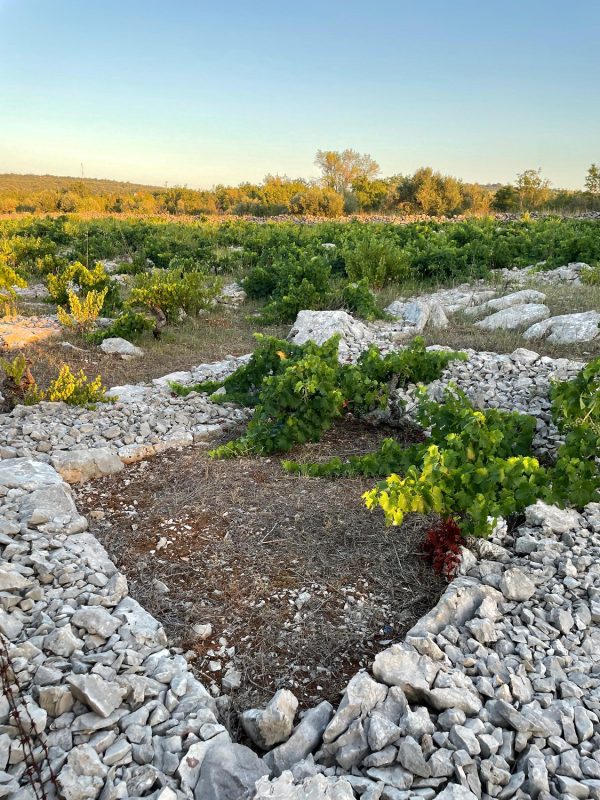
Hand-built stone “vlačice” protecting vines in the sun-drenched vineyards of Primošten – a timeless symbol of Dalmatian perseverance.
On Bucavac, young Babić vines need more than ten years to reach their full potential. By contrast, on milder sites, that usually happens within 5 to 7 years. But here – time moves slower, and the land tests every vine.
When you arrive in Primošten, it’s hard not to stop and take it all in. Everything you see – was built by human hands alone. Stones had to be dug out just to make room for a vine. Those stones couldn’t be thrown away – so they were stacked into walls that now define the landscape.
No machine can help here. Bucavac is the realm of “vlačica” and “tirade” – traditional stone paths and passageways where tractors don’t fit. Everything that grows, grows thanks to bloody effort, an understanding of the terrain, and harmony with nature.
Summers bring scorching heat. Winters bring winds strong enough to break the vines, which is why local authorities had to build taller stone walls to protect the low-growing, bush-trained vines.
The soil here is mostly stone, but that’s exactly what Babić loves. Little rain, plenty of sun and wind – ideal conditions for healthy vines without disease, and extremely low yields. Often, just 2 or 3 clusters per vine.
These tiny yields are a mark of exceptional quality. It’s no wonder that Babić from Bucavac is often twice as expensive as from other sites. When you set foot on that land, you know why.
It’s not just the people fighting for survival – the vines are too.
Roots must dig deep through limestone and rock, in search of scarce water and nutrients. Vines on Bucavac rarely grow taller than 50 cm, and winemakers say you must kneel before them 4–5 times a year – as if before something sacred.
Because of all this, Babić wines from Bucavac are intensely concentrated, with deep aromas and a pronounced signature of the land.
This is terroir in its purest form – a wine that doesn’t tell a story of technique, but a story of endurance.
What Is Babić Wine – and What (Not) to Compare It To
Babić is a red grape variety native to Dalmatia, with its deepest roots in the rocky hillsides around Primošten, where it has thrived for centuries. Its small, thick-skinned berries develop under extreme conditions – where the sun blazes, the soil is stone, and the wind never rests.
This unique blend of climate and soil gives Babić wine its unmistakable personality. It is known for its rich and layered flavor, with aromas of marasca cherry, spice, and subtle earthy undertones. On the palate, you’ll often find notes of dark berries and Mediterranean herbs, balanced by bright acidity and restrained, smooth tannins – quite unlike Plavac Mali, whose tannins are typically bolder and more aggressive.
Babić pairs beautifully with traditional Dalmatian cuisine – from lamb and octopus under the bell (peka), to richer fish dishes. Its versatility and authenticity make it an increasingly popular choice not just among connoisseurs, but also among curious wine lovers discovering Croatia’s indigenous gems.
Thanks to its limited production and compelling story, Babić has recently caught the attention of collectors and wine investors. Its authenticity and long-term value are now being recognized far beyond the borders of Croatia.
Babić Is Not “Croatia’s Plavac” – It’s Its Own Voice
Although Babić and Plavac Mali are genetically related, their characters couldn’t be more different. Where Plavac speaks of power, intensity, and alcohol, Babić whispers of balance, elegance, and quiet complexity.
There are two known types of Babić – Babić Mali (small) and Babić Veliki (large) – named for the size of their grape clusters. Babić Mali has a greater capacity to accumulate sugar, which leads to fuller-bodied wines with higher alcohol, especially when harvested from premium sites like Bucavac.
If one insists on international comparisons, experts often relate Babić to Syrah, due to its spice, herbaceousness, and structured tannins. But when you consider everything – the sun, the stone, the dry walls, the concentration, and the soul – Babić is actually closer to Spain’s Tempranillo, particularly those grown in harsh, sun-drenched terrains.
Unlike lighter, fruit-forward wines, Babić is never thin or forgettable. It tends to be medium to full-bodied, yet it never loses its elegance. The finest examples are known for being delicate and age-worthy, with complexity that unfolds slowly, sip by sip.
Although often mentioned alongside Plavac Mali, Crljenak (Tribidrag) and other Dalmatian red varieties, Babić shares the most with the rare, balanced expressions of local grapes like Plavina, Darnekuša, and Babica – and yet, it remains entirely its own. Unrepeatable. Distinct. True.
The Taste of Babić – Strength, Freshness, and Pure Dalmatia in a Glass
Babić never leaves an impression of mediocrity. Every sip is bold, vibrant, and alive – bursting with sun-drenched red fruit, aromatic marasca cherries, Mediterranean herbs, and the subtle spice absorbed through careful oak aging.
What makes Babić so extraordinary among warm-climate wines is its rare ability to be both full-bodied and incredibly fresh. Its natural acidity, preserved even under the most extreme conditions, gives it remarkable drinkability – even on the hottest summer days.
The finest bottles of Babić come from the toughest vineyard positions, where the vine fights its way through handfuls of rocky soil. From this harsh environment, the grape draws out minerality, depth, and an earthy character that simply can’t be faked.
It’s a flavor that says – without needing to – “This is Dalmatia.”
Babić Wine Flavor Profile:
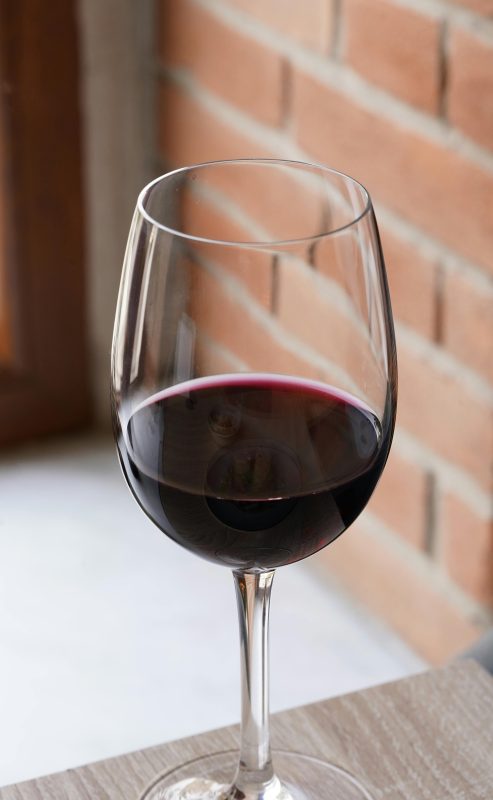
A glass of Dalmatian Babić red wine – rich, vibrant and full of character
-
Body: Medium to full – when grown in the right places, Babić delivers wines with true depth and concentration.
-
Tannins: Moderate to high – providing structure and weight, but never harsh or overpowering.
-
Acidity: One of the variety’s greatest assets – natural freshness that gives the wine both energy and length.
-
Aging: Oak is used thoughtfully – to soften tannins and add subtle spice notes, without masking the grape’s unique identity.
-
Aromatics: Red berries, cherries, herbs, earth, and minerality – all in perfect harmony.
As it ripens, Babić may shift into darker fruit expressions, but never loses its elegance and signature freshness.
In the hands of a skilled winemaker, the best examples strike a balance few warm-climate wines can –
power without heaviness, richness without excess, and liveliness without sharpness.
Our Babić – A Bottle That Holds What Stone Never Forgets
Across all those dry-stone walls, under relentless sun, through winds that have bent and broken vines for generations, one thing has remained the same –
our reason for making this wine.
The Vrhunski Babić by OPG Branko Marinov isn’t born in a lab or shaped in a marketing studio.
It’s born where tractors can’t reach, where work is done with heads down, fingers in the soil, and palms the stone knows by name.
This isn’t a “product.”
It’s proof that persistence has a taste.
Each bottle of our Babić carries the story of hand-harvested grapes from our oldest vines, slow, natural fermentation, and aging in carefully chosen barrels.
But above all, it carries the story of a family that doesn’t compromise.
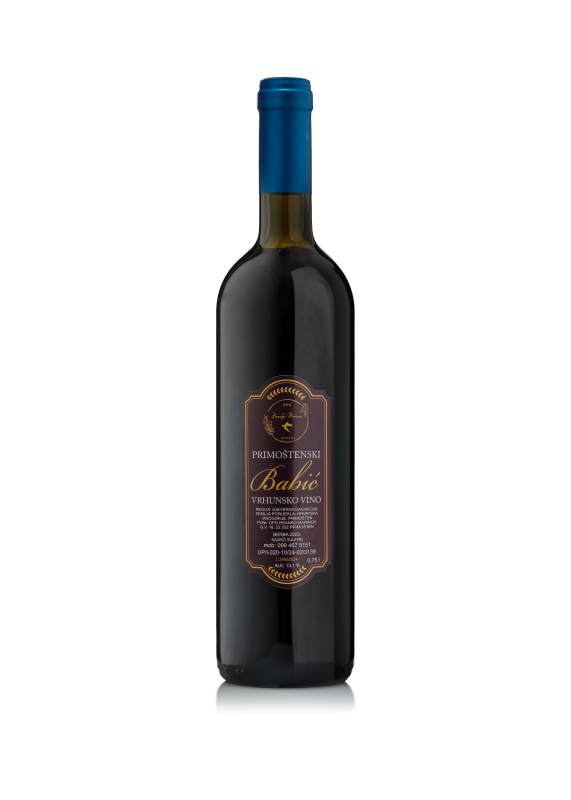
Babić wine 0.75L – Handcrafted in Primošten by OPG Branko Marinov
What can you expect when you open our Babić?
A deep ruby color and an aroma that takes you back – to marasca cherries, figs, and rosemary you may have last smelled as a child.
A flavor that lingers.
Layered, fresh, and serious – but never pretentious.
The unmistakable handwritten signature of terroir, because every bottle comes from a handful of vines we care for like members of the family.
Limited. Truly.
We don’t produce Babić in large batches.
Each year depends on nature – sometimes we have more, sometimes less. But never too much.
So if you’re looking for a wine to remember, not just drink, now is the time to claim your place:
👉 Order Vrhunski Babić by OPG Branko Marinov here
When you open our bottle, you’re not just opening wine.
You’re opening a chapter in a story that’s still being written.
The land hasn’t had its last word.
And neither have we.

